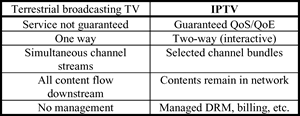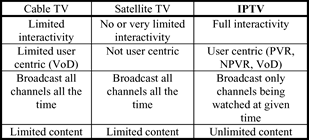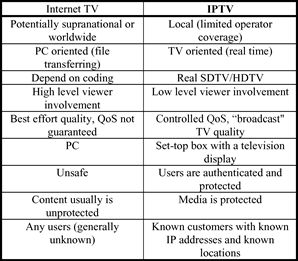Television distribution is one of the largest technology infrastructures deployed after telephone and electric power networks.
Digital technologies have completely transformed the telephone system creating a much more versatile and dynamic telecommunications infrastructure and services.
The television distribution is now undergoing a similar digital revolution. Internet Protocol Television, or IPTV, is one of the promising techniques which takes a step further by merging telecommunications and digital television delivery services, unleashing new, more personal options to consumers, and fulfilling the promises of a real home broadband multimedia experience.
By early 2009, there should be more than 25 million IPTV users in the world. Now it is a good time to take a step back and look at what has been achieved, what is missing and what the future might be holding.
The motivation for this IPTV special edition also resides in the completion of a number of standardization activities that have taken several years to achieve.
It is interesting to take a look at what standards have to offer, and how they might change the landscape of IPTV in the years to come.

An Opening Market
IPTV has been a significant driver for telecom investments for the last few years. The bandwidth requirements of video transmission make it one of, if not the most, demanding mass-market telecommunication applications to date.
Transmission of a Standard Definition (SD) video stream takes several Mbit/s, while High Definition (HD) reaches into the tens Mbit/s. This is far more than what is required for voice transmission (typically 32 to 64 Kbit/s), or even to browse the internet.
As a result, IPTV has been the best motivation for operators to deploy higher-speed DSL (no longer 256–784 Kbit/s but up to 28 Mbit/s), and to consider deploying optical fiber beyond central offices to curb cabinets (FTTC), buildings or even homes (FTTH).
These capacity upgrades also bring much higher Internet communication speed and enable new services such as video telephony or file sharing, but it is not certain that in isolation they would have been a sufficient motivation for operators to invest in massive new infrastructures, or indeed for customers to pay premium subscriptions.
IPTV has been the catalyst for a technology leap. Because the basic technology—IP—is the same for the Internet connection and IPTV, it enables a more fluid mix of services that can share the available bandwidth more consistently.
Differences Between TV, IPTV and WebTV
The advantages and challenges of IPTV reside in the differences between existing terrestrial broadcasting TV, cable TV and satellite TV.
IPTV differentiates from traditional terrestrial broadcasting TV in many ways. Table I lists some major differences between these two services. Comparing with existing cable TV and satellite TV, IPTV distinguishes itself with full interactivity, high personalization and flexibility as shown in Table II.


IPTV is not TV that is broadcasted over the Internet. There are actually wide spread confusions between Internet TV and IPTV. Table III illustrates a comparison between the two.






